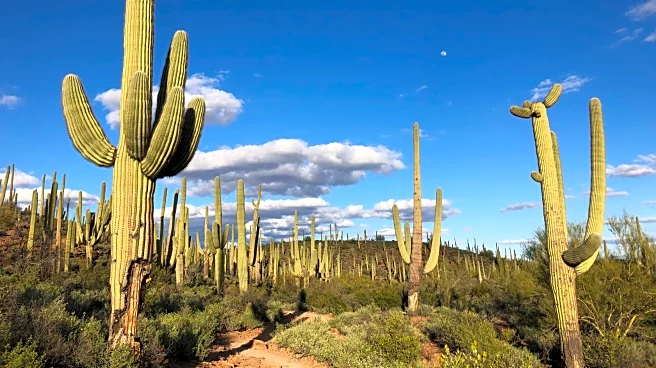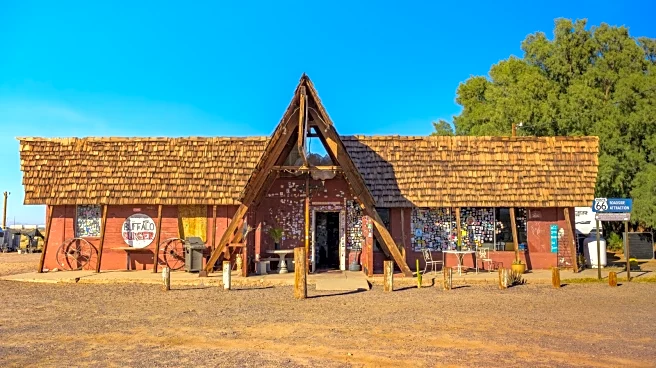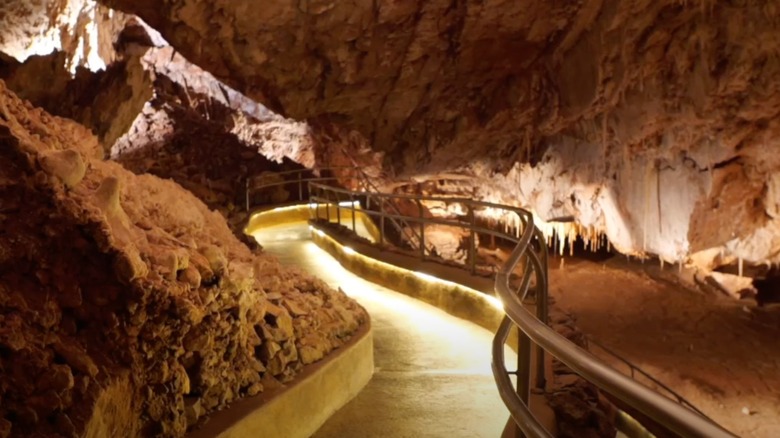
Imagine this: a secret cave hiding in the mountains, two amateur spelunkers going where no human had ever been before, blindfolding officials on the way to tour the cave to prevent them from knowing its exact location, and the hidden limestone wonder finally being revealed to the public 25 years after its discovery. No, this isn't the plot of an adventure movie; it's the true story of the caverns in Kartchner Caverns State Park, a surreal state park just an hour's drive southeast of Tucson, Arizona.
While two individuals had first discovered the caverns deep in the Whetstone Mountains in 1974, they weren't opened to the public until 1999. And those who first knew about them kept them a secret for as long as they could while the Arizona Parks Department developed plans to safely open them for public visitation.
The cavern houses some of the world's biggest speleothems (cave formations), like a massive 21-foot-long soda straw stalactite. The cave is also home to the planet's largest stretch of brushite moonmilk, a soft, bulbous material found on cave walls that is powdery when dry and has a cream cheese-like consistency when wet. Because of its splendor and uniqueness, Kartchner Caverns is often considered one of the top 10 caves in the world by geologists and was voted as the best cave in the U.S. by USA Today in 2016. While there are 2.5 miles of underground tunnels and chambers in the caverns, the spaces open to the public include the Throne Room, the site of Kubla Khan (Arizona's largest column formation), and the Big Room, where moonmilk slowly grows along the walls.
The state park is not limited to the underground world at Kartchner Caverns. It boasts a handful of scenic trails in the foothills of the Whetstone Mountains as well as basic cabins and a campground for those who want to spend the night. A visit to the Kartchner Caverns State Park really does feel like stepping (or crawling) through a portal into a fantastical place, which is no small feat considering the abundance of Arizona's otherworldly attractions and surreal landscapes.
Read more: The 5 Best Hidden Hot Spring Hikes In California
The Kartchner Caverns' Surreal History
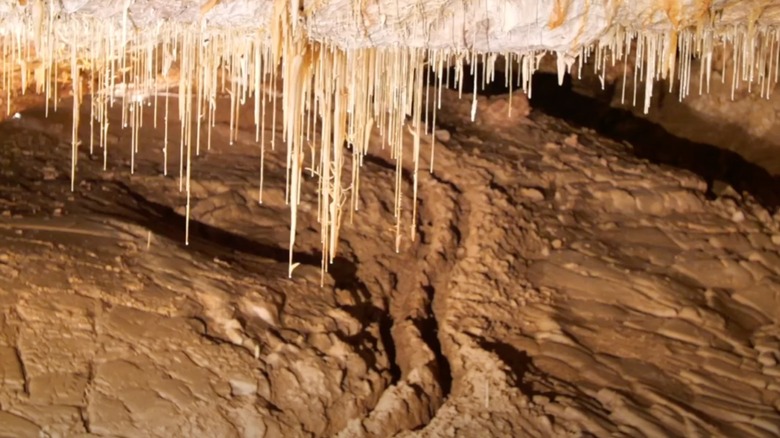
There are a number of secret, surreal, and photogenic caves in Arizona, but Kartchner Caverns is truly special. And almost as impressive as the caverns themselves is the story of how they were discovered and eventually opened to the public. Amateur spelunkers Gary Tenen and Randy Tufts were on the hunt for unknown caves and stumbled upon the caverns in 1974 when they came across a narrow crack in a sinkhole and felt warm air blowing out of it. Tufts in particular was so committed to finding a new cave in his beloved Whetstone Mountains that he had trained by squeezing his body through coat hangers, which was a wise choice since he had to chip and crawl his way through tunnels and narrow spaces that no human had entered before.
Terrified of word getting out and the caverns' unspoiled beauty being lost to vandalism, Tenen and Tufts then spent years mapping them out before even telling the landowners —the Kartchner family — about what they had found. Eventually the two men did inform the Kartchners and began escorting state officials into the caverns, but they would blindfold the officials on the drive there to prevent them from knowing their exact location. Ultimately, after years of secrecy, the in-the-know group decided that the best way to preserve the caverns was to open them to the public under the protection of the Arizona State Parks Department, which could devote the millions of dollars needed to develop the site, add conservation features like misting machines and air-locked doors, and then maintain the area over time for visitors. As state parks chief Ken Travous noted to the LA Times in 1999 after the Kartchner Caverns public opening, "There were footprints on the moon before there were footprints in Kartchner." Since the grand opening, there have been quite a few footprints in Kartchner. Fortunately, though, fears about its demise have never materialized.
Visiting Kartchner Caverns State Park
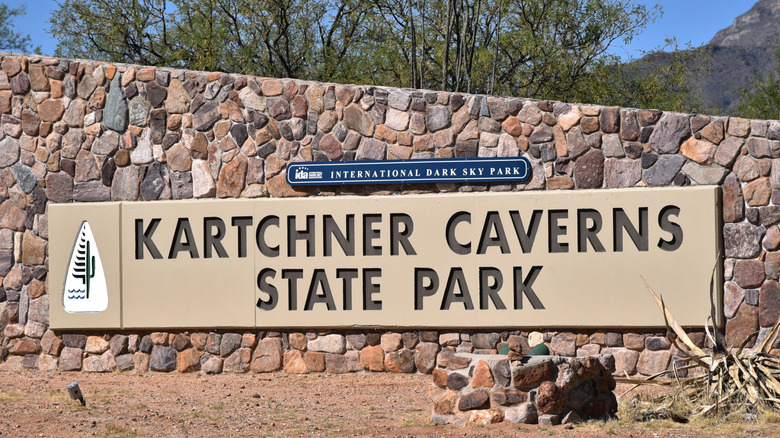
Thanks to a constant influx of water, Kartchner Caverns is a living cave, meaning it's still growing and transforming at a very slow rate of one inch per 750 years. This delicate process must be carefully protected, and thus, the only way to visit the caverns is to take a guided tour. There are several different tours to choose from, ranging from 1 to 2 hours in length.
A tour of the Big Room is only available from October to April, since this chamber becomes home to a colony of breeding bats during the rest of the year. Meanwhile, the Rotunda/Throne Tour is open year-round and allows you to see some of the cave's most impressive features, including the Kubla Khan column as well as some 45,000-year-old bat guano. As of the time of writing, each of the standard tours is $30 per person ($15 for kids 7 to 13 and $5 for children under 7) and must be booked separately; note that children under 7 are not allowed on Big Room tours. The underground trails at Kartchner Caverns are accessible to those with disabilities and include ADA-compliant walkways. Visitors must leave their belongings, including cameras and cellphones, in lockers outside the caves. If you're interested in taking photos, you can book a photography tour, which costs $175 per person at the time of this writing and is only open to folks 18 and older.
Besides visiting the cave, you can also explore the surrounding area on one of the Kartchner Caverns State Park's beautiful trails. For example, the 2.5-mile moderately challenging Foothills Loop travels up a limestone hill near the cave and then goes down into a wash, with opportunities to see lovely desert flora along the way, including cacti like ocotillo, barrel cactus, prickly pear, and buckhorn cholla, and trees like mesquite, acacia, and scrub oak. The Ocotillo Trail is a 1.7-mile addition to the aforementioned loop and at times, opens up to panoramic views of the valley. If you choose to stay the night here in a cabin or tent, you should know that the Tucson area is known as one of the world's best stargazing destinations. So be sure to look up in the sky after so much time spent exploring below!
Ready to discover more hidden gems and expert travel tips? Subscribe to our free newsletter for access to the world's best-kept travel secrets.
Read the original article on Islands.
